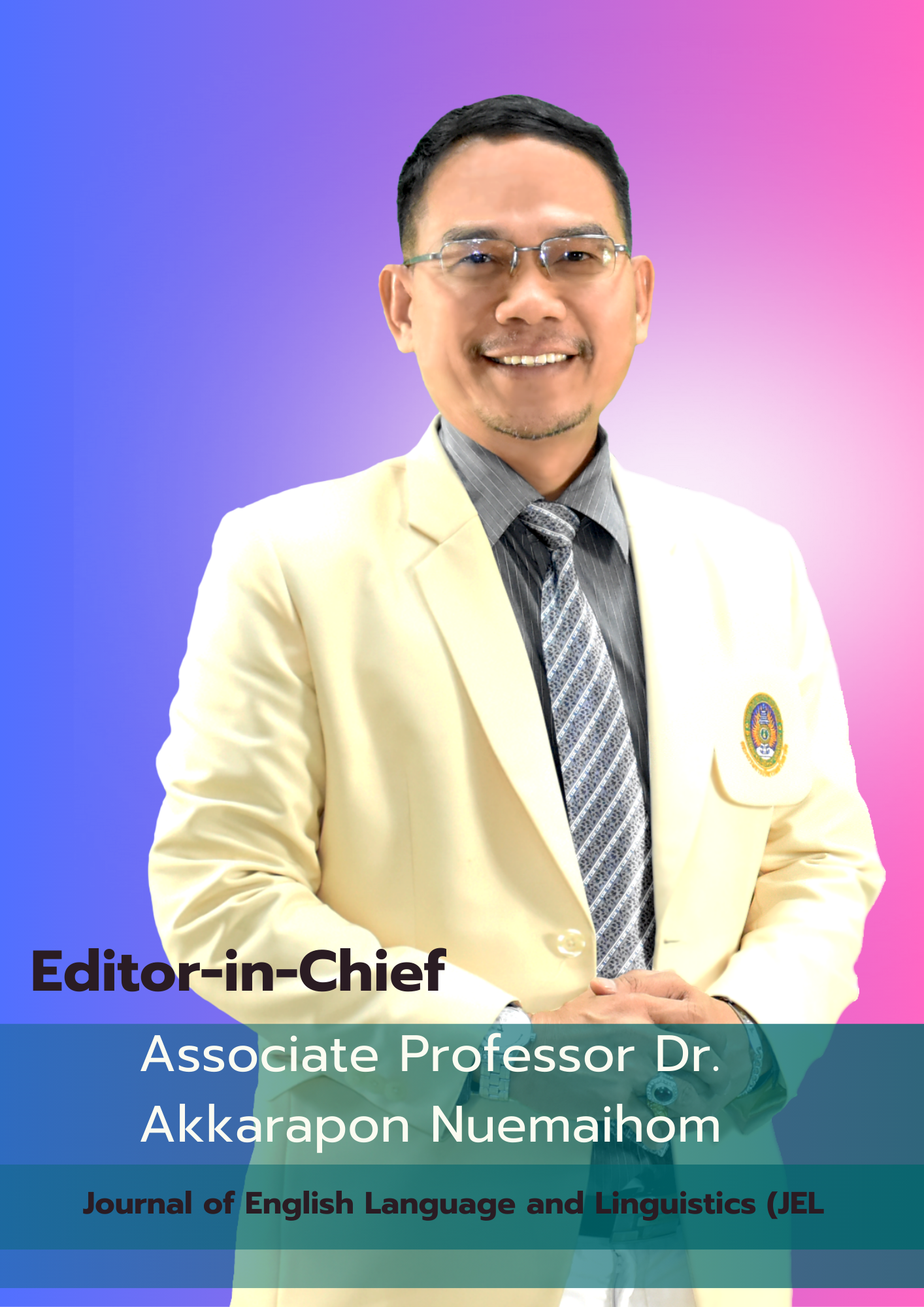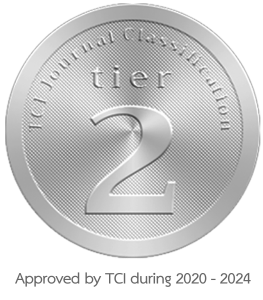Thai EFL undergraduate students’ attitudes towards syntactic structures in English writing
DOI:
https://doi.org/10.62819/jel.2024.146Keywords:
attitudes, syntactic structures, Thai EFL learners, writingAbstract
This study investigated Thai EFL students’ attitudes of difficulties towards syntactic structures in English writing and their evaluation of frequencies in using syntactic structures in their writing. The participants in this study were 30 sophomores, majoring in English from a private university in Thailand. They were asked to fill in a questionnaire concerning syntactic structures in English writing. The instrument in this study was a questionnaire with a five-scale measurement. The descriptive statistical analysis via frequencies and percentages was used to calculate the data analysis. The results in this study show that the participants feel that dependent clauses are difficult for them to use, especially adverbial clauses, reduced adjective clauses and verbless adverbial clauses. Based upon their evaluation towards frequencies of syntactic structures, the participants frequently used existential there constructions and adjective clauses in their writing in English. It was highly expected that the results of this study would be useful for English language teachers to gain better understanding of Thai EFL university students towards their difficulties with syntactic structures in English writing. So, English teachers could bring the results of this study to provide improvement to their students.
References
Arakkitsakul, Y. (2019). Five things that Thai teachers have to considers before teaching English grammar. Journal of Southern Technology, 12(2), 257-263.
Asawapannarai, S. (2016). A corpus-based study on contrastive adverbial use in academic writing[Master’s Thesis, Thammasat University]. Thailand.
Azad, A. K. (2013). Grammar teaching in EFL classrooms: Teachers’ attitudes and beliefs. ASA University Review, 7(2), 111-126.
Bachman, L. F., & Palmer, A. S. (1982). The construct validation of some components of communicative proficiency.TESOL Quarterly, 16(4), 449-465.
Baker, C. (1992). Attitudes and languages. Adelaid Matters. Canh, L. V., & Barnard, R. (2009). Teaching grammar: A survey of teachers’ attitudes in Vietnam. The Journal of Asia TEFL, 6(3), 245-273.
Choomthong, D. (2014). Preparing Thais’ English for the ASEAN economic community: Some pedagogical implications and trends. Language Education and Acquisition Research Network (LEARN) Journal, 7(1), 45-57.
Chuenchaichon, Y. (2018). An analysis of syntactic complexity used in essay writing produced by EFL writers. Journal of Humanities Naresuan University, 16(3), 1-20.
Etikan, I., Musa, S. A., & Alkassim, R. S. (2016). Comparison of convenience sampling and purposive sampling.American Journal of Theoretical and Applied Statistics, 5(1), 1-4.
Garrett, P. (2010). Attitudes to language. Cambridge University Press.
Hazout, I. (2010). Verbless sentences and clause structure.Linguistic inquiry, 41(3), 471-485.
Kampookaew, P. (2020). An analysis of grammatical errors made by Thai EFL university students in an EAP writing class: Issues and recommendations. rEFLection, 27(2), 246-273.
Kearns, K. (2000).Semantics. Macmillan Press.
Leuckert, S. (2005). Adverbial subordination across variety types: A synchronic analysis of the syntax and semantics of since- and while-clauses in ENL, ESL, and EFL. Elena Secane, Carlos Acuna-Farina & Ignacio Palacios-Martinez (ed.). In Subordination in English (pp. 236-262). Walter de Gruyter.
Promsupa, P., Varasarin, P., & Brudhiprabha, P. (2017). An error analysis of grammatical errors in English writing of Thai University students. HRD Journal, 8(1), 93-104.
Radford, A. (2009). An introduction of English sentence structures. Cambridge University Press.
Saengboon, S. (2017). English grammar and Thai university students: An insurmountable linguistic battle? English Language Teaching, 10(11), 22-36.
Sattayatham, A., & Honsa, S. (2007). Medical students’ most frequent errors at Mahidol University, Thailand. The Asian EFL Journal, 9(2), 170- 194.
Sheridan, D. (2013).Teaching secondary English: Readings and applications. Routledge.Swan, A. (2016). Practical English usage. Oxford: Oxford University Press.
Usaha, S., & Watcharapunyawong, S. (2013). Thai EFL students’ writing errors in different text types: the interference of the first language. English Language Teaching, 6(1), 67-78.
Waelateh, B., Boonsuk, E., Ambele, E. A., & Jeharsae, F. (2019). An analysis of the written errors of Thai EFL students’ essay writing in English. Songklanakalin Journal of Social Science and Humanities, 25(3), 55-82.
Wongkittiporn, A. (2021). Making impersonal comments via it-extraposition: Perspectives of syntactic structure, semantic denotations and pragmatic aspects via literature, magazines and applied linguistics articles in English.Journal of Rattana Bundit University, 16(2), 20-38.
Wongkittiporn, A. (2023). Pragmatic perspectives of the raised DP in raising and passive constructions in applied linguistics articles.Liberal Arts Review, 18(1), 40-64.
Zhang, X. (2016). A corpus-based study on Chinese EFL learners' acquisition of English existential construction.Journal of Language Teaching and Research, 7(4), 709-715.



















